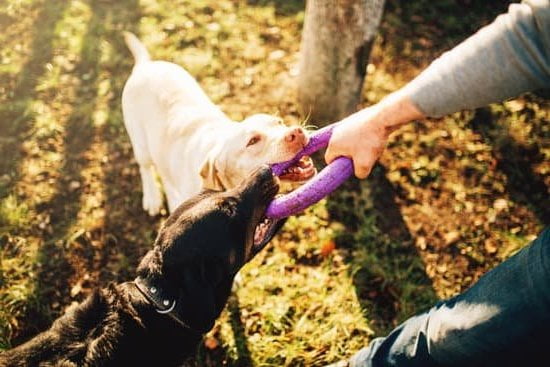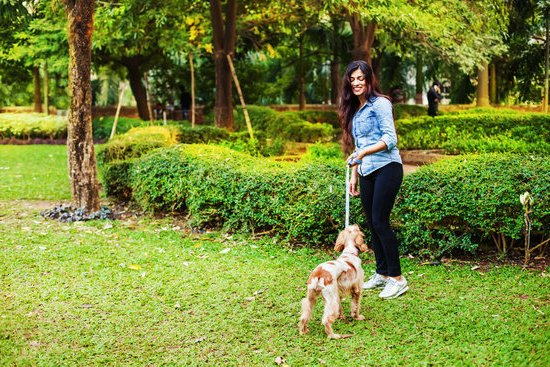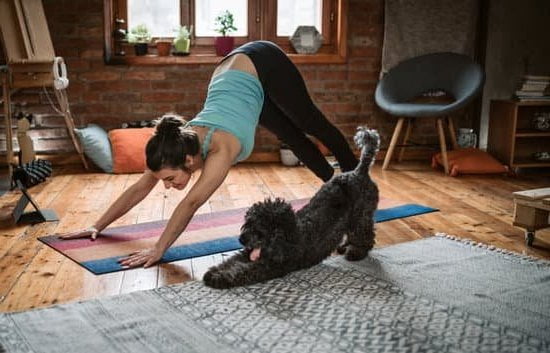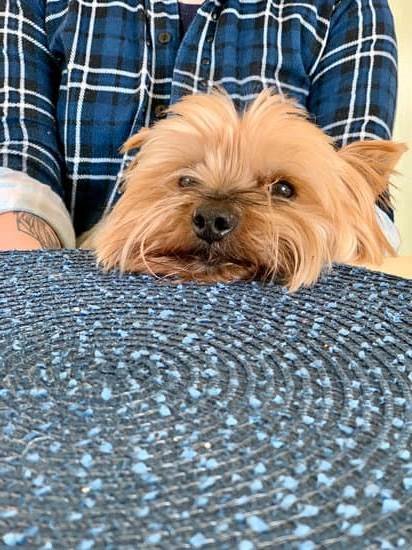Potty training a dog is an essential aspect of responsible pet ownership. It not only prevents messes in the house but also creates a healthy and hygienic environment for both the dog and its owner. Understanding your dog’s bathroom behavior, choosing the right training method, and establishing a consistent schedule are key components to successfully potty train your furry companion.
Understanding your dog’s bathroom behavior is crucial in effectively potty training them. This includes recognizing signs that they need to go, such as sniffing around or circling a specific area. By understanding their behavior, you can anticipate their needs and guide them to the appropriate potty area.
When it comes to potty training methods, there are various approaches to consider. Each dog is unique, so it’s important to choose a method that aligns with your dog’s temperament and your lifestyle. Whether it’s crate training, paper training, or using puppy pads, finding the right approach will set the foundation for successful potty training. Establishing a consistent schedule for feeding, walking, and bathroom breaks is also essential in reinforcing good bathroom habits in dogs.
Understanding Your Dog’s Bathroom Behavior
Normal Bathroom Behavior
Dogs have a natural instinct to keep their living space clean, which is why potty training a dog can be successful with the right approach. Understanding your dog’s normal bathroom behavior is crucial in effectively potty training them. Most dogs will show signs such as circling or sniffing when they need to go potty. By being able to recognize these signs, you can better anticipate when your dog needs to relieve themselves and prevent accidents indoors.
Marking Behavior
In addition to their regular bathroom behavior, dogs may also exhibit marking behavior, especially in male dogs who have not been neutered. Marking usually involves lifting a leg and urinating on vertical surfaces as a way of marking territory. It’s important to understand that marking behavior is not the same as needing to relieve themselves and requires different training techniques.
Anxiety-Related Bathroom Issues
Some dogs may experience anxiety-related bathroom issues, such as submissive urination or inappropriate elimination due to fear or stress. These behaviors can be challenging to address but understanding the underlying cause of the anxiety is essential in helping your dog overcome these issues. Effective potty training for a dog with anxiety-related bathroom problems will often involve creating a safe and secure environment for them and using positive reinforcement techniques to build their confidence.
Understanding your dog’s bathroom behavior is the first step in successfully potty training them. By paying attention to their signals and addressing any underlying issues, you can set the stage for a successful training process.
Choosing the Right Potty Training Method for Your Dog
The key to successfully potty training a dog is choosing the right method that works for both you and your pet. There are several different approaches to potty training, and it’s important to pick one that aligns with your dog’s behavior and your lifestyle. The two main methods of potty training for dogs are crate training and paper training.
Crate training involves confining your dog in a crate when you are unable to supervise them, as dogs have a natural instinct to keep their den clean. This method is effective because it teaches dogs to hold their bladder and bowels until they are let out of the crate.
On the other hand, paper training involves laying down newspapers or pee pads in a designated area of your home where you want your dog to eliminate. This method is suitable for smaller breeds or dogs living in apartments without easy access to outdoor spaces.
When choosing a potty training method for your dog, consider factors such as the age and breed of your dog, as well as your own daily schedule. Whichever method you choose, consistency, patience, and positive reinforcement are crucial elements in successfully potty training a dog.
According to the American Kennel Club (AKC), it’s important not to punish or scold your dog during the potty training process, as this can lead to anxiety and fear. Instead, use positive reinforcement techniques such as treats, praise, or playtime when your dog eliminates in the designated area. Remember that every dog is different, so be patient and understanding throughout the potty training journey.
Setting Up a Potty Training Schedule
Creating a potty training schedule for your dog is essential in ensuring that they develop good bathroom habits. By establishing a routine, you can help your dog understand when and where they should go to the bathroom, making the potty training process more effective. Here are some steps to help you set up a potty training schedule for your dog:
- Observe your dog’s bathroom behavior: Before creating a schedule, take note of when your dog typically goes to the bathroom. This will give you an idea of their natural bathroom habits and help you schedule potty breaks accordingly.
- Establish regular potty break times: Based on your observations, set specific times throughout the day for potty breaks. This typically includes first thing in the morning, after meals, before bedtime, and every few hours in between.
- Designate a specific potty area: Choose a designated spot outside where you want your dog to go to the bathroom. Take them to this same spot each time they need to relieve themselves to reinforce good habits.
Consistency is key when setting up a potty training schedule for your dog. The more consistent you are with the schedule, the quicker your dog will learn where and when it’s appropriate to go to the bathroom.
Remember that every dog is different, so be patient and flexible as you work with your furry friend through this learning process.
Tips for Successful Potty Training
Successfully potty training a dog requires patience, consistency, and the right approach. Here are some essential tips to help you effectively potty train your furry friend:
- Use positive reinforcement: When your dog successfully goes to the bathroom outside, be sure to praise and reward them. This will help them associate outdoor elimination with positive experiences. Consider using treats, a favorite toy, or verbal praise as a reward.
- Establish a routine: Dogs thrive on routine, so it’s important to take them outside at the same times each day. This includes first thing in the morning, after meals, before bedtime, and any other consistent times that work for you and your pet.
- Supervise your dog: Keep an eye on your dog when they’re indoors to prevent accidents. If you can’t supervise them, consider using baby gates or crates to confine them to a smaller area of the house.
- Be patient and consistent: Potty training takes time and persistence. Even if there are setbacks or accidents, remain calm and continue with the established routine. Consistency is key in reinforcing good habits.
Potty training a dog is not always easy, but with these tips in mind, it’s possible to successfully teach your pet where they should go potty. By understanding your dog’s behavior and being consistent with positive reinforcement and routine, you can set your furry friend up for success in their potty training journey.
Dealing With Accidents
Understanding Why Accidents Happen
Accidents are a normal part of potty training a dog. Dogs have a natural instinct to eliminate where they smell their own scent or the scent of other animals. This means that accidents can happen for a variety of reasons, including not being properly supervised, not being taken outside frequently enough, or simply because the dog is still learning. Understanding why accidents happen can help you better address the issue and prevent future accidents from occurring.
Cleaning Up Accidents
When accidents do happen, it’s important to clean up the mess properly in order to prevent your dog from going back to the same spot. Use an enzymatic cleaner specifically designed for pet accidents to thoroughly clean the area and remove any lingering odors. This will discourage your dog from using the same spot again and help them understand where they should be eliminating.
Remaining Calm and Patient
It’s crucial to remain calm and patient when dealing with accidents during potty training. Getting frustrated or scolding your dog can actually make potty training more challenging by creating anxiety around elimination. Instead, focus on positive reinforcement for successful eliminations outdoors and continue to supervise your dog closely until they have fully grasped the concept of potty training.
By understanding why accidents happen, cleaning up properly, and remaining patient and consistent, you can effectively deal with accidents during the potty training process. Remember that each dog is different, so it may take some time for your pet to fully grasp potty training habits.
Using Positive Reinforcement in Potty Training
Positive reinforcement is an essential component of successful potty training for dogs. This method involves rewarding your dog for exhibiting the desired behavior, such as going to the bathroom in the designated spot. By using positive reinforcement, you can effectively communicate to your dog what you expect from them and encourage them to repeat the behavior.
One popular approach to positive reinforcement in potty training is using treats as a reward. When your dog goes to the bathroom in the appropriate area, immediately praise them and give them a small treat. Over time, they will learn to associate using the designated potty spot with receiving a reward, which will motivate them to continue doing so.
In addition to using treats, verbal praise and affection can also be effective forms of positive reinforcement in potty training a dog. Whenever your dog successfully goes to the bathroom in the right place, use an enthusiastic tone of voice and petting as a way to show them that they have done well. This positive feedback will strengthen their association between using the designated area for elimination and receiving praise from you.
| Positive Reinforcement Methods | Effectiveness |
|---|---|
| Treats as Rewards | Highly Effective |
| Verbal Praise and Affection | Effective |
Troubleshooting Common Potty Training Problems
Dogs, like humans, can sometimes have difficulty with the potty training process. One of the most common problems dog owners encounter when potty training a dog is their pet’s reluctance to eliminate in the designated area. This can be frustrating for both the owner and the dog, but it is important to address this issue with patience and understanding.
One common reason for a dog’s reluctance to use the designated bathroom area is fear or anxiety. Some dogs may feel uncomfortable eliminating in a specific location, especially if it is unfamiliar or noisy. To address this problem, it is essential to create a calm and inviting environment for your dog to do its business. Consider using positive reinforcement techniques, such as treats or praise, to encourage your dog to use the designated bathroom area.
Another common potty training problem is frequent accidents inside the house. Accidents are bound to happen during the potty training process, but if they occur too frequently, it may indicate that there is an underlying issue that needs to be addressed.
In some cases, accidents can be caused by a medical condition or behavioral issue. If your dog continues to have accidents despite consistent potty training efforts, it may be best to consult with a veterinarian or professional dog trainer for further guidance.
Additionally, some dogs may exhibit stubborn behavior when it comes to potty training. They may refuse to follow commands or show resistance towards the training process. In these cases, it is important for owners to remain patient and consistent in their approach.
Using positive reinforcement and staying firm with the established potty training schedule can help address stubborn behavior in dogs. Remember that every dog is different, so it may take time and effort to overcome these challenges while potty training a dog.
Resources for Further Potty Training Support
In conclusion, potty training a dog is an essential part of being a responsible pet owner. It not only prevents potential messes in the home but also helps to establish a strong bond and understanding between you and your furry companion. By understanding your dog’s bathroom behavior, choosing the right potty training method, setting up a schedule, and using positive reinforcement, you can successfully potty train your dog.
If you find yourself facing challenges or needing additional support with potty training your dog, there are various resources available to help. From online forums and community groups to professional trainers and dog behaviorists, there are plenty of options for further guidance. These resources can offer personalized advice, troubleshooting tips for common problems, and support from other dog owners who have gone through similar experiences.
Remember that every dog is different, and potty training may take time and patience. It’s important to stay consistent, calm, and positive throughout the process. With the right approach and support, you can guide your furry friend towards successful potty training and a happy, healthy relationship with them in the future.
Frequently Asked Questions
How Long Does It Take for a Dog to Be Potty Trained?
The time it takes for a dog to be potty trained can vary depending on the dog’s breed, age, and individual temperament. On average, it can take anywhere from 4 to 6 months for a dog to be fully potty trained.
How Do You Potty Train a Dog Fast?
To potty train a dog quickly, consistency and positive reinforcement are key. Establish a regular feeding schedule, take your dog outside frequently, and praise them when they eliminate outdoors. Supervise them closely indoors and clean up accidents promptly.
How Do You Discipline a Dog for Potty Training?
When disciplining a dog for potty training accidents, it’s important to remember that punishment after the fact is not effective. Instead, redirect their behavior by making sure they understand where they should eliminate and providing positive reinforcement when they do so appropriately. Consistency and patience are crucial in the training process.

Welcome to the blog! I am a professional dog trainer and have been working with dogs for many years. In this blog, I will be discussing various topics related to dog training, including tips, tricks, and advice. I hope you find this information helpful and informative. Thanks for reading!





